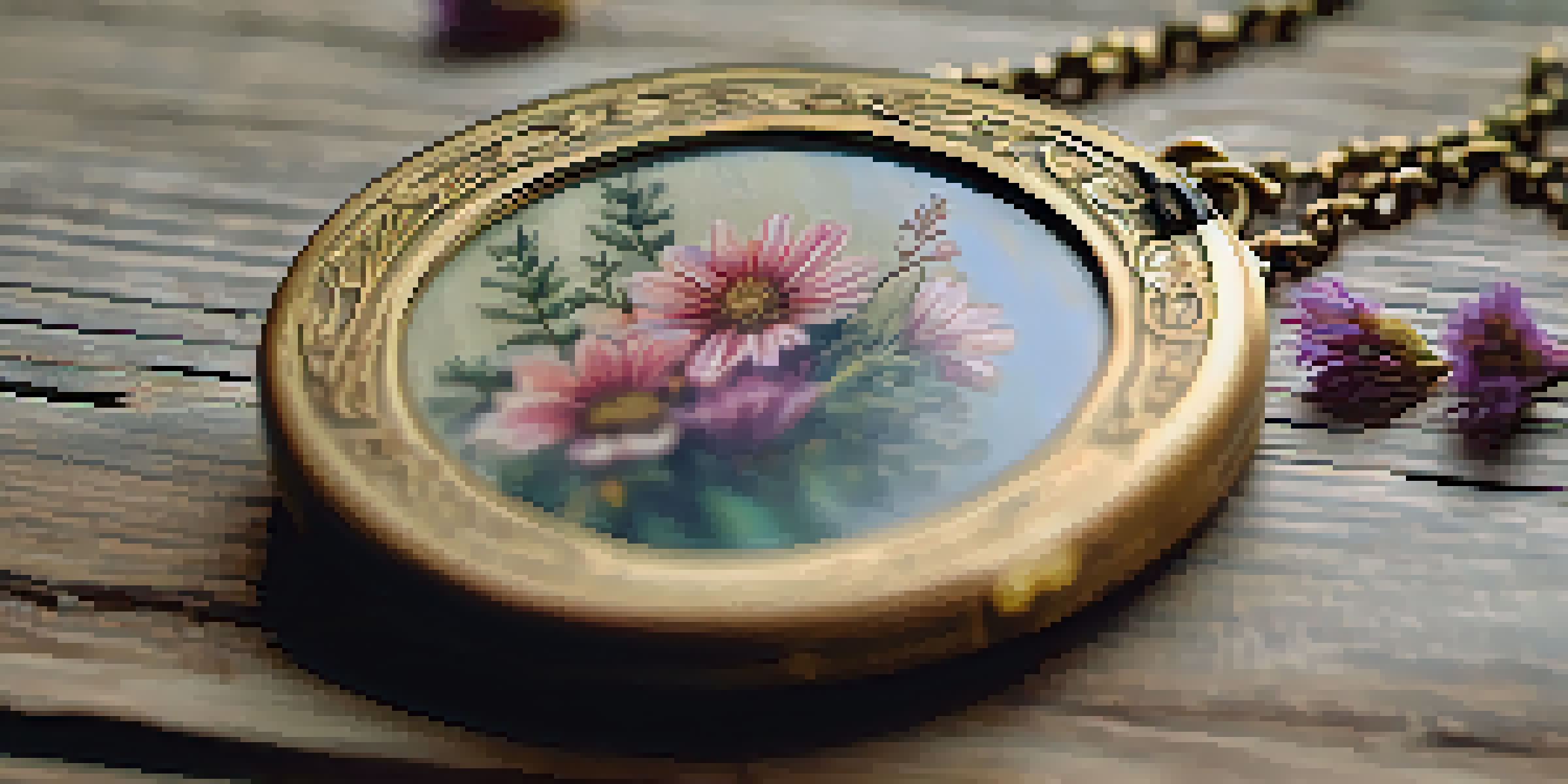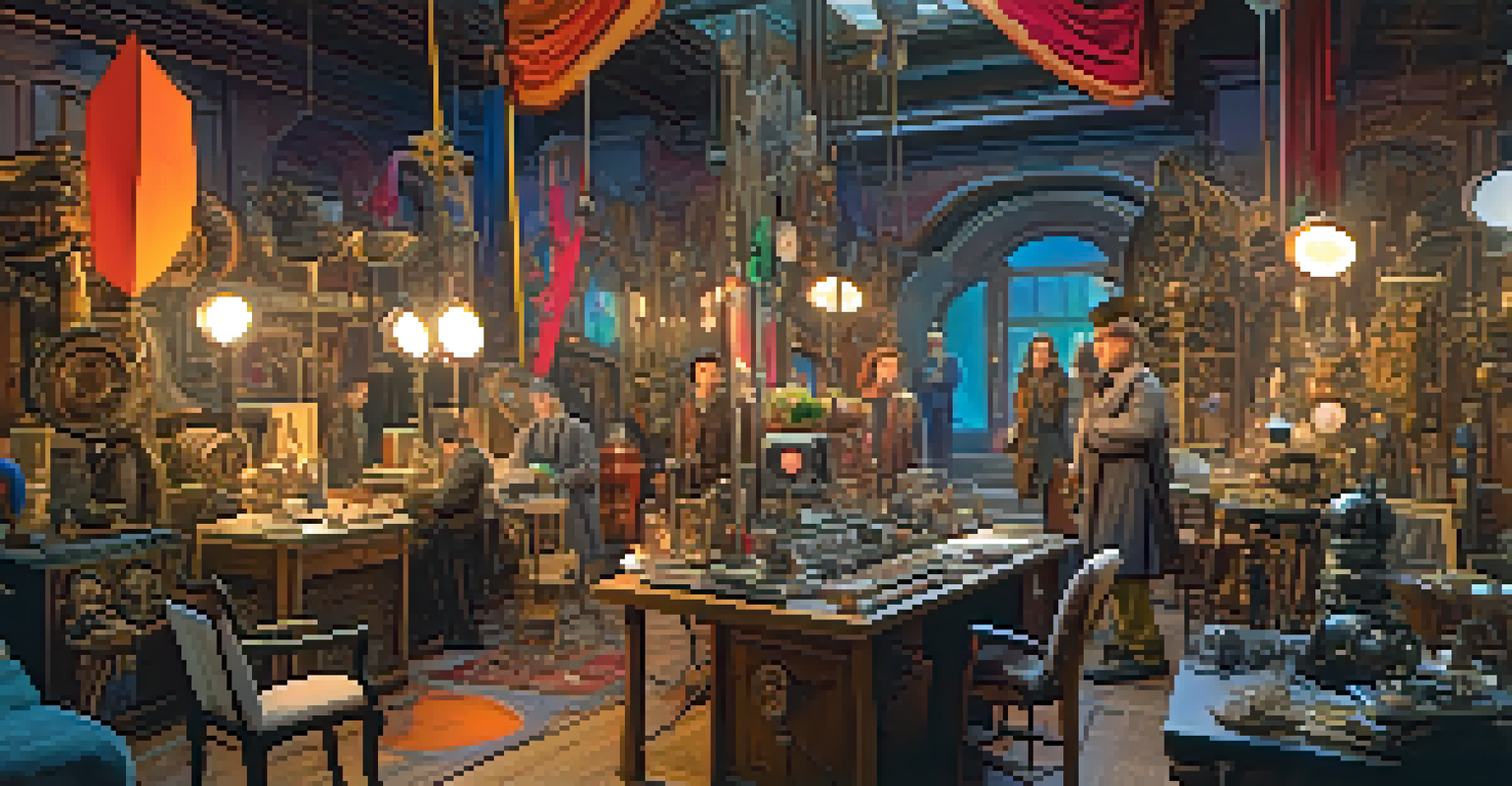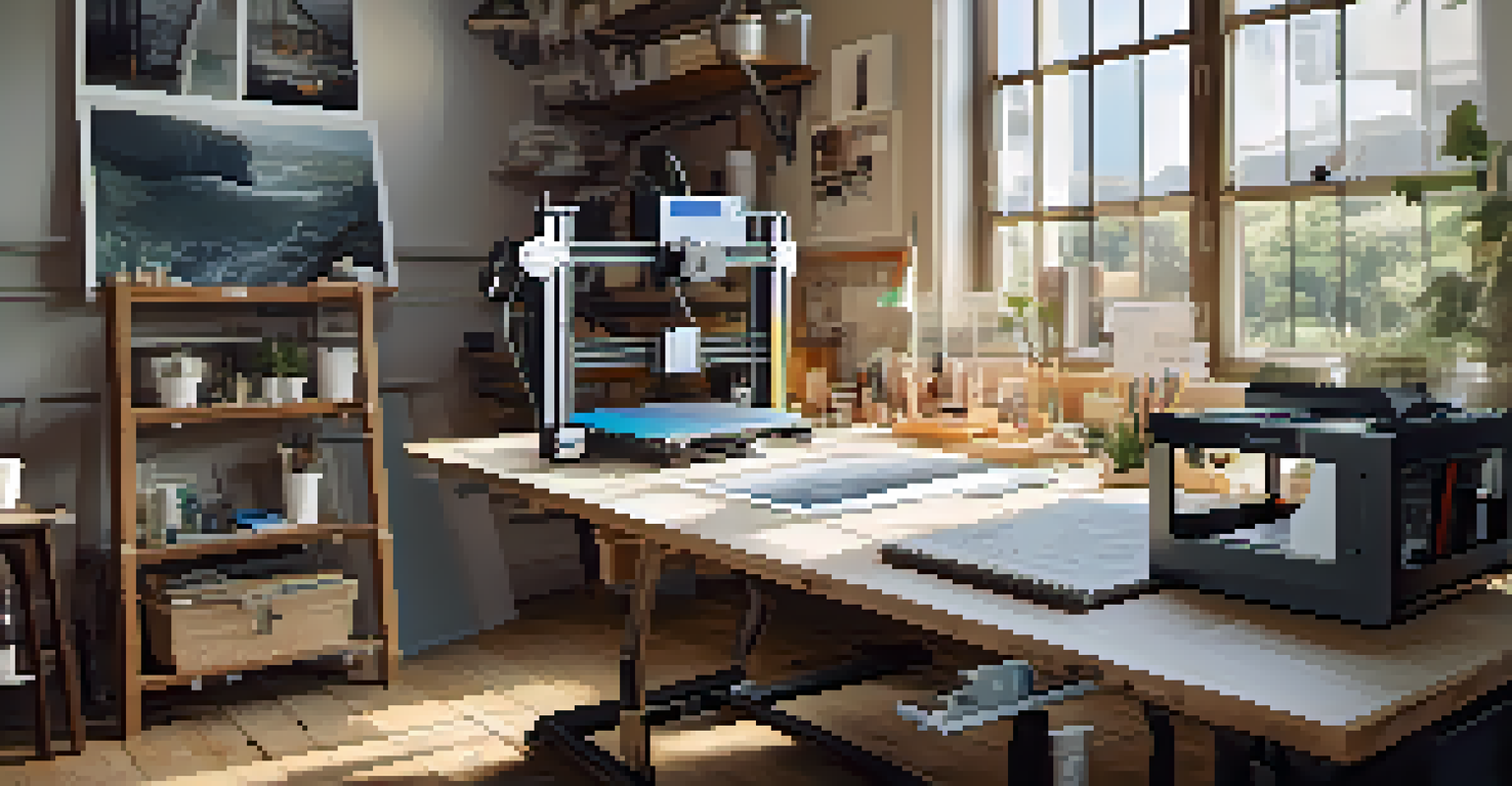Behind the Scenes: The Art of Prop Design in Film

The Essential Role of Props in Storytelling
Props are more than just items on set; they are vital storytelling tools that enhance the narrative. They help to create a believable world, making characters and scenes relatable to the audience. For instance, think about the iconic lightsaber in Star Wars—it's not just a weapon; it represents the conflict between good and evil.
Props are the visual language of film, and they speak volumes without uttering a word.
The right prop can evoke emotions, signify character traits, or even foreshadow events. When you see a character clutching a locket, it may symbolize nostalgia or lost love, adding depth to their backstory. This subtlety is what makes prop design so essential in connecting viewers to the story.
In short, props serve as visual metaphors that enrich the viewing experience, making them crucial for effective storytelling in film.
The Process of Prop Design: From Concept to Creation
The journey of a prop begins with brainstorming ideas and concepts that align with the film's vision. Designers collaborate with directors and production designers to ensure each item fits seamlessly into the world being created. This initial phase often involves sketches and mood boards to visualize how props will look and feel.

Once concepts are approved, the actual crafting begins. Prop makers may use various materials, from wood and metal to foam and fabric, depending on the prop's purpose and required durability. Each piece undergoes rigorous testing to ensure it performs well on set, especially for action scenes where safety is paramount.
Props Enhance Storytelling Depth
Props are crucial storytelling tools that create a believable world and connect viewers to characters and narratives.
This meticulous process exemplifies the blend of artistry and practicality in prop design, transforming creative ideas into tangible items that bring stories to life.
Collaboration: The Heart of Effective Prop Design
Collaboration is key in prop design, as it involves various departments working together harmoniously. Prop designers often liaise with costume designers, set decorators, and the director to ensure a cohesive look throughout the film. This teamwork fosters a shared vision, allowing props to complement the overall aesthetic.
The best stories are told not just through words, but through the objects that fill up the spaces in between.
For example, in a historical film, props must accurately reflect the time period, thus requiring extensive research. Designers might consult historians or reference materials to guarantee authenticity. This attention to detail reinforces the film's credibility and immerses the audience in its world.
Ultimately, successful collaboration not only makes the prop design process smoother, but it also enhances the final product, creating a rich cinematic experience.
Innovative Techniques in Modern Prop Design
As technology advances, so do the techniques used in prop design. 3D printing, for example, has revolutionized the way props are created, allowing for intricate designs that were once impossible to produce. This technology enables designers to quickly prototype and iterate on ideas, streamlining the creative process.
Moreover, digital tools like computer-aided design (CAD) software help in visualizing props before they are physically made. Designers can manipulate shapes and colors, making it easier to communicate ideas with the production team. This tech-savvy approach not only enhances creativity but also reduces time on set.
Collaboration is Key in Design
Effective prop design relies on collaboration among various departments to ensure a cohesive and authentic cinematic experience.
By embracing innovation, prop designers can push boundaries and create more engaging, visually stunning elements that captivate audiences.
The Impact of Props on Audience Perception
Props can significantly influence how audiences perceive characters and their motivations. A well-designed prop can embody a character's personality, beliefs, or emotional state. For example, a worn-out book might suggest a character's love for literature, while a luxurious watch could imply wealth or status.
This visual storytelling is powerful because it often communicates themes and messages without dialogue. Audiences may not consciously notice these details, but they contribute to the overall understanding of the narrative and characters. It's a subtle yet effective way to engage viewers on a deeper level.
In essence, props shape audience perceptions and can make or break the connection between viewers and the film.
Challenges Faced by Prop Designers
While prop design can be incredibly rewarding, it's not without its challenges. One major hurdle is working within budget constraints, which can limit the materials and resources available for prop creation. Designers often need to be resourceful, finding creative solutions to make high-quality props without overspending.
Additionally, time constraints can add pressure, especially on large productions where deadlines are tight. Designers must balance quality with efficiency, ensuring props are ready for filming while maintaining their artistic vision. This often requires quick thinking and adaptability.
Innovation Shapes Future Design
Modern techniques like 3D printing and a focus on sustainability are transforming prop design, allowing for more creativity and environmental responsibility.
Despite these challenges, prop designers remain dedicated to their craft, finding joy in problem-solving and bringing imagination to life.
The Future of Prop Design in Film
As the film industry evolves, so too does the role of prop designers. With the growing popularity of virtual reality (VR) and augmented reality (AR), props are now being designed for immersive experiences that go beyond traditional film. This opens up exciting new avenues for creativity and innovation.
Furthermore, sustainability is becoming an increasingly important focus in prop design. Many designers are exploring eco-friendly materials and practices, aiming to reduce waste and environmental impact. This shift not only supports the planet but also resonates with audiences who value sustainability.

Looking ahead, prop design is set to embrace new technologies and values, ensuring that this integral part of filmmaking continues to thrive and inspire.